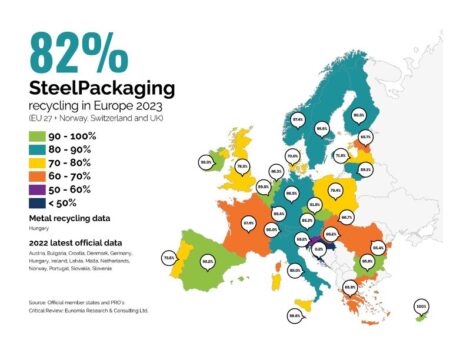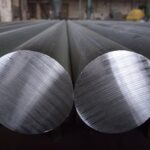Steel packaging achieves highest recycling rate on record
Steel for Packaging Europe has confirmed the highest ever EU recycling rate for steel packaging, bringing the steel packaging sector even closer to fully closing the material loop.
Independently verified and calculated using the EU’s harmonised methodology, the latest figures reveal that 82% of steel packaging placed on the market was ‘really recycled’ in 2023, meaning it entered actual recycling operations, rather than just being collected.
The announcement confirms that steel packaging remains the most widely recycled packaging material in Europe, already meeting the strictest recyclability criteria as outlined in the Packaging and Packaging Waste Regulation (PPWR).
This record rate represents a 2-percentage point increase compared to 2022, reinforcing the vital role of steel scrap which is essential for the sustainable production of new steel products, by reducing energy consumption and emissions in the manufacturing process.
Steve Claus, Secretary General of Steel for Packaging Europe, said: “The production and use of steel for packaging in the EU plays a critical role in helping member states achieve their circular economy goals – conserving resources, and reducing emissions as well as helping to maintain food security and prevent food waste.
“Meanwhile, the continued rise in steel packaging recycling rates, which corresponds to the amount of packaging that is really recycled at the entrance of recycling operations and not the volume of collected packaging which might contain impurities, reflects our industry’s commitment to closing the material loop.
“All recycled steel packaging will be used to make new steel products without loss of quality. It could be a train, a wind-turbine or even a new item of steel packaging, and this clearly indicates why steel packaging fits so well with the EU circular economy vision, and why it contributes to a better environment for citizens everywhere.”
While celebrating this achievement, Mr Claus highlighted that further progress is needed. He called for high-quality recycling and promoting separate collection systems across Member States while also working to ensure EU steel for packaging remains competitive on global export markets.
He added: “Steel packaging has long set the standard as a model material for a circular economy. The forthcoming, new EU Circular Economy Act, which is expected to be implemented in 2026, is set to unify circular economy policies and prioritise sustainable access to critical raw materials. In this context, the importance of steel packaging’s practical, local and sustainable recycling success story, cannot be overstated.”
Following its recycling rate announcement, the Steel for Packaging Europe once again urged all EU institutions to maintain high levels of ambition to collectively build a greener, more circular future for Europe.






